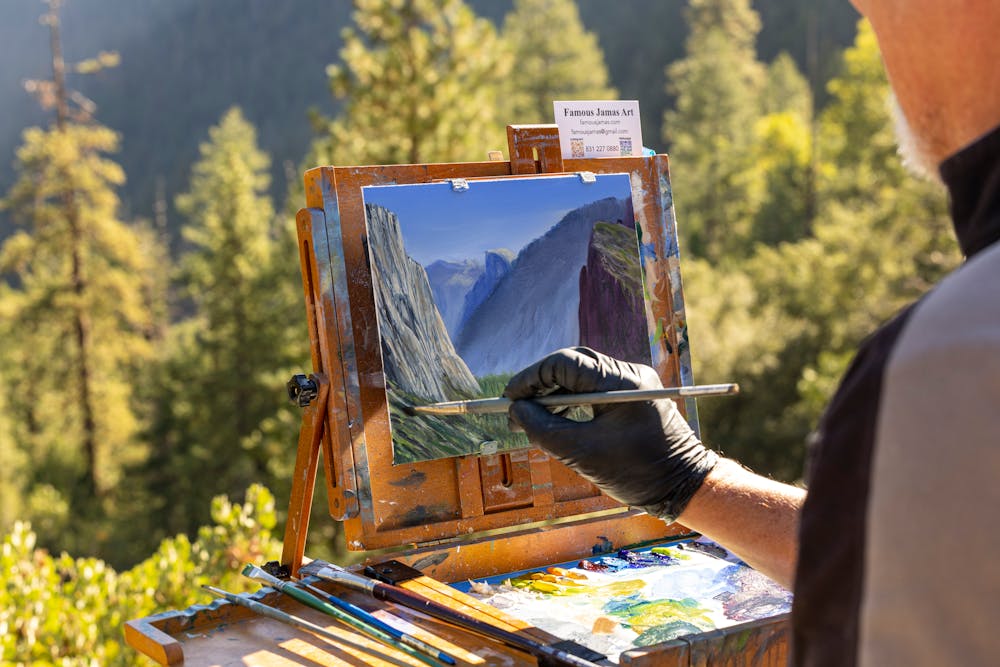
Aesthetic Curiosity Helps You Sell Smarter and Better
I recently came across the term “aesthetic curiosity” in the context of psychotherapy, and got “aesthetically curious” about its potential application in complex B2B sales.
As I thought about it, I realized that the characteristics of “aesthetic curiosity” are qualities we see in our best salespeople. It occurred to me that learning and coaching salespeople to practice aesthetic curiosity can help us all sell smarter and better.
What Is Aesthetic Curiosity?
Aesthetic curiosity is the art of being very present without judgment, and becoming curious about what you are witnessing. An artist sits with a landscape and appreciates it aesthetically, for what it is, and then gets curious about how the light and the color interacts to produce the result, and then investigates how to get the result they themself want to produce with their art. That is aesthetic curiosity.
In psychotherapy, aesthetic curiosity is a useful approach to connect with patients, and to help them find answers to what is troubling them. Instead of judging, fixing, or diagnosing, aesthetic curiosity enables the therapist to truly see and understand the patient. To explore how their actions make sense in the context, and then help them develop more adaptive coping mechanisms and behaviors.
Instead of focusing on how the present behavior is “wrong,” this approach seeks to find how the behvior might be “right” in its context and builds trust and confidence in the patient. Then it helps both the therapist and the client to understand how the client can improve the situation and their own relationship to it.
Why Should We Care About Aesthetic Curiosity in Complex B2B Sales?
Advances in technology allow us to do many amazing things in complex B2B sales. We are better able to research and contact potential prospects. We can track and share information and progress on sales projects. We can analyze data and forecast pipelines. Generative AI enables us to summarize, organize, and analyze large quantities of information, ideate ideas, and communicate quickly and efficiently.
Aesthetic curiosity invites us to rehumanize the sales conversation.
Meanwhile, buyers continue to change as the technology landscape changes. Compared to thirty years ago, they tend to be better informed, but also more overwhelmed by choice, complexity, and inboxes filled with automated sales messages. The average complex B2B sale involves more stakeholders, more competing priorities, and, often, unclear decision-making processes.
The human element of the buyer’s situation is often overlooked amid the hubbub, and buyers can end up overwhelmed to the point of no decision. Aesthetic curiosity enables your salespeople to truly see and understand the complex human aspect of each project, and to create a competitive advantage through trust and understanding.
What Does Aesthetic Curiosity Look Like in Complex B2B Sales?
Aesthetic curiosity in complex B2B sales looks like salespeople who are nonjudgmental, who do not proceed from a script, and who instead are genuinely curious and open in their interactions. Salespeople who care not just about outcomes for themselves, but about the humans they are interacting with, and what matters to them.
Aesthetic curiosity is not asking lots of questions. It’s asking curious questions, from a place of genuine wondering of the customer’s context. Instead of questions like “what’s your budget,” it’s questions like, “what will success be like?” “what might stand in the way of this project?” “What are you hoping will happen as a result of this process?” Instead of “who’s the decision maker?” it’s questions like, “how are decisions made in your world?”
Aesthetic curiosity is about paying attention to the human in front of you, their tone, energy, and the pacing of the conversation. It is about noticing when their voice doesn’t match their words. It is about having active empathy for how their environment and the relationships within their organization are impacting them. It is about how something that sounds nonsensical in your ears makes sense to them in their environment.
How Aesthetic Curiosity Can Elevate Sales
Aesthetic curiosity isn’t just a soft and squishy new approach. It’s something that great salespeople have always done, and I am merely placing words to it from another domain. While you may not be able to measure it, you can count on results.
For instance:
- Build trust faster. Buyers are used to being sold to. Being fully present and curious about them encourages them to let their guard down and become more open and collaborative.
- Reveal hidden stakeholders and motivations. Buying decisions aren’t made on logic alone. When you explore with curiosity, buyers will open up about fears, hopes, and the politics beneath the surface, so you can better help them solve their problems.
- Differentiate the buyer experience. There are plenty of great solutions out there to almost any problem. Your B2B buyers are not going to buy because of your product features. They’re going to buy because of the experience you give them. Aesthetic curiosity elevates their experience.
- Solve problems faster and better. When you see and understand the buyer, you can help them explore the problem more fully and discover solutions together that they might otherwise have missed. Bonus: These collaboratively built solutions are more likely to lead to a positive buying decision.
How to Practice Aesthetic Curiosity
The catch with aesthetic curiosity is that you have to actually mean it. You can’t apply it as a trick or manipulation. Buyers will sense that, and the effect is lost. You have to actually be curious. You have to actually be non-judgmental and be aware of your biases. You have to actually see and understand them.
You can’t just check it off your checklist and move along. You have to practice it throughout the sales process, and to do that, you have to be practicing it in broader contexts as well.
Here are some tips to get started:
- Slow down. Instead of rushing to meet numbers, slow down and pay attention to the person in front of you, the conversation, and the emotions and energy being expressed. Try this in your life beyond sales, and see what effect it has. The most effective salespeople practice aesthetic curiosity in every aspect of their lives.
- Listen for what’s NOT being said. Aesthetic curiosity means being curious not just about what’s obvious, but about what’s not obvious, too. Pay attention to tone shifts, hesitations, and other non-verbal communications, and get curious about them.
- Focus on the present moment. Don’t get stuck thinking about outcomes and pushing for them. Stop rehearsing your next point. Just pay attention, right here, right now.
- Ask thought-provoking “soft” questions. Don’t get stuck thinking every question has to be about numbers and outcomes. Consider asking “softer” questions like “What’s the hardest part about this for you?” “What would success look like to you personally?” and “What matters the most to you?”
- Pay attention to reactions. When you ask a question or make a statement, pay attention to what happens next. Does their voice tighten? Do they suddenly pause? These small cues will reveal hidden truths. Be ready to follow up: “I sensed some hesitation. Do you want to talk about that?”
- Talk less. It’s a common refrain in sales training: Ask more questions, say fewer words. There are all kinds of formulas for this, but the formula that works is the one that causes you to slow down and be more curious. Listen for what the buyer wants to (and does) communicate. Be less eager to talk at them about what you think is important. Grow comfortable with silence, and allow the buyer to fill in the gaps.
Aesthetic Curiosity Must be Modeled and Valued
In order for aesthetic curiosity to thrive in your sales organization, it must be modeled and valued not only by your salespeople, but by their managers and coaches, their leaders, and the company’s management.
Consider re-evaluating KPIs from an aesthetically curious standpoint. Are they rewarding the right things? Are we debriefing deals with curiosity instead of criticism? Are we building a culture where salespeople feel safe to listen and explore and do not always have the answers?
Slowing down this way can feel counterintuitive, but it will actually speed sales because it builds alignment and solves the right problems, positioning you as true partners, not just vendors.
And What About You? Will You Practice Aesthetic Curiosity?
In our world of tech stacks, process optimization, and automation, we can become obsessed with numbers and velocity. These things matter, but so do humans.
Aesthetic curiosity invites us to rehumanize the sales conversation. What about you? How will you practice aesthetic curiosity in sales?

By George Brontén
George is the founder & CEO of Membrain, the Sales Enablement CRM that makes it easy to execute your sales strategy. A life-long entrepreneur with 20 years of experience in the software space and a passion for sales and marketing. With the life motto "Don't settle for mainstream", he is always looking for new ways to achieve improved business results using innovative software, skills, and processes. George is also the author of the book Stop Killing Deals and the host of the Stop Killing Deals webinar and podcast series.
Find out more about George Brontén on LinkedIn







